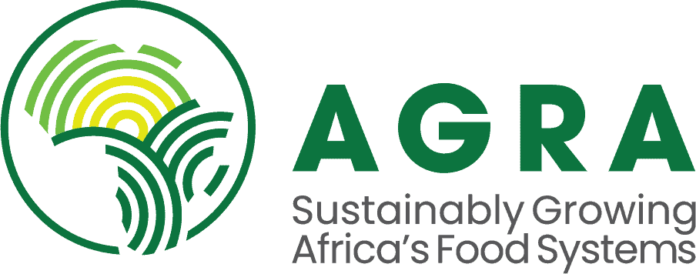Staple food prices across East Africa showed mixed but generally stable trends, reflecting complex interplay of seasonal harvests, macroeconomic conditions, and regional trade.
Maize prices declined in most countries, with the sharpest drop in Uganda (−17%) due to increased supply, while South Sudan maintained the highest prices despite a 6% decline.
Rice prices rose across all markets, led by South Sudan (+14.3%) and Tanzania (+7.3%), reflecting supply constraints and currency effects.
Beans prices also trended upward in the short term, particularly in Uganda (+4.7%) and Rwanda (+3.4%), though longer-term trends in Kenya and Tanzania show declines.
Wheat prices softened slightly in USD terms in Kenya and Ethiopia, but local currency data indicate sustained inflationary pressure, especially in Ethiopia.
Fertiliser prices showed contrasting trends: Kenya experienced significant year-on-year declines in CAN (−44.08%), while Rwanda saw rising prices for Urea and NPK, potentially impacting input affordability.
Southern Africa’s commodity markets showed notable volatility, particularly in maize and fertiliser prices across the region.
Maize prices rose most sharply in Mozambique (+32.5%) and Malawi (+7%), driven by supply constraints and seasonal demand, while Zambia recorded a moderate increase (+6.8%) despite a recent steep decline in previous months due to a bumper harvest.
Fertiliser prices in Malawi were highly volatile, with urea rising by over 100% year-on-year, posing risks to input affordability and agricultural productivity.
Rice and bean markets showed mixed trends: rice prices fell in Malawi and Zambia but rose in Mozambique, while bean prices declined in Malawi and increased in Mozambique.
These movements reflect localised supply dynamics and trade flows, with the onset of a La Niña-driven rainy season expected to support improved crop yields and food availability across the region.
Finally, in West Africa, maize prices fell in Ghana (−9.26%) but rose sharply in Togo (+24%) and Nigeria (+7.34%) due to localised supply constraints.
Rice prices declined across most markets, notably in Nigeria (−10.88%) and Togo (−7.48%), with an isolated increase in Togo’s Maritime region (+17.7%).
Millet prices dropped significantly in Niger (−20.35%) but rose modestly in Nigeria (+3.65%) and parts of Mali. Sorghum prices also declined in Ghana (−5.17%), Niger (−12.47%), and Mali (−9.55%), while Nigeria recorded an increase (+8.76%) due to supply and currency pressures.
Overall, price declines were supported by improved supply, trader destocking, and favourable harvests, although flooding and conflict in parts of Nigeria, Ghana, Mali, and Niger pose ongoing risks to agricultural productivity and market stability.
Food Security Updates
As of September 2025, the food and nutrition security situation in East and Central Africa remains critical. In Sudan and South Sudan alone, approximately 721,000 people are facing IPC Phase 5 (Famine/Catastrophe) conditions.
Across the IGD region, 11.5 million people are in IPC Phase 4 (Emergency) and 28 million in IPC Phase 3 (Crisis).
Across the 10 countries covered by the IPC analysis, the number of people affected has reached 71 million. Alarmingly, more than six million children in the IGAD region are suffering from acute malnutrition, underscoring the urgent need for coordinated humanitarian and policy responses.
In Southern Africa, food insecurity remains a pressing concern across several countries. In Malawi, Crisis (IPC Phase 3) outcomes persist in southern districts due to poor harvests, high maize prices and low incomes, with the lean season starting earlier than usual.
Mozambique faces similar conditions, particularly in the north where conflict has displaced thousands and disrupted livelihoods, while southern and central semi-arid areas continue to struggle with the aftermath of droughts and limited market access.
In Zimbabwe, although most households still rely on own-produced food following a favourable harvest, poor households in deficit-producing regions are increasingly dependent on markets amid constrained purchasing power. According to the latest IPC analysis, 45% of Zimbabwe’s rural population is in Crisis or Emergency (IPC Phase 3 or 4).
In West Africa, food insecurity remains widespread, particularly in conflict-affected regions. In Burkina Faso, poor households in areas like Sebba and Arbinda face severe food consumption deficits due to market disruptions and limited aid, while other localities benefit from subsidised cereals and local harvests, although low incomes still restrict access.
Mali is experiencing rising insecurity and displacement, especially in the south and west, with blockades disrupting trade and driving up food prices. Niger continues to face acute food insecurity in conflict-hit regions, worsened by flooding that affected over 268,000 people and damaged crops and livestock.
Despite favourable rainfall supporting overall yields and falling food prices, recovery remains limited in flood- and conflict-affected areas. Nigeria has the highest burden, with around 30.6 million people in Crisis or worse (IPC Phase 3 or above), driven by conflict and poor nutrition, while Ghana has about two million people facing similar conditions, highlighting the need for targeted interventions across the region.
Food Trade Updates
Kenya has officially joined Tanzania in implementing a container guarantee system, effectively eliminating the long-standing requirement for cash deposit guarantees on cargo containers.
This marks a significant step toward streamlining trade across the region. With the adoption of the container guarantee service at the ports of Mombasa and Lamu, importers can expect a smoother and more cost-effective process.
The Nigeria Customs Service (NCS) has rolled out a new policy exempting imports valued at US$300 or less from duties and taxes. This initiative is designed to streamline trade processes, encourage cross-border e-commerce, and reduce operational costs for businesses.
Effective from September 8, 2025, the US$300 de minimis threshold applies to goods arriving through express delivery services or carried as passenger baggage. However, the exemption does not apply to items that are prohibited or restricted under Nigerian import regulations.








